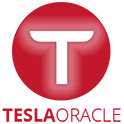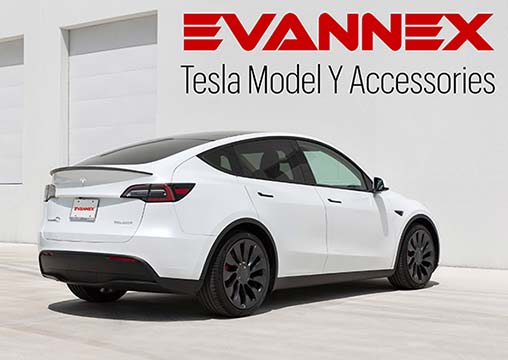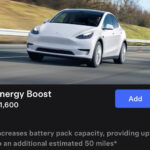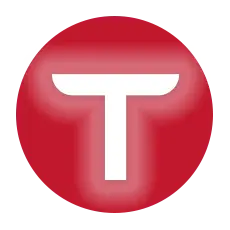It has been a long pause since Tesla released a new version of FSD Beta to its customers. The last version was 10.69.25.2 and there has been no update to the non-Tesla-owned cars in 2023 yet.
However, the first iteration of the next major version FSD Beta V11 was first seen on Tesla employee cars back in November 2022. Tesla has still kept this release to its limited FSD Beta Early Access Program (EAP) employees for in-house testing only.
Tesla CEO Elon Musk hinted earlier this month that FSD Beta V11.3 is ready and he has tested it himself, and a wide release should be expected with the improved version 11.3.2.
So, as the limited release of FSD Beta 11.3 began yesterday, the release notes got leaked on Twitter. Reportedly, one of the Tesla employees posted them on the social media platform but immediately deleted them afterward. Tesla enthusiasts copied them instantly in the meantime.
Voice Notes Feedback in FSD Beta V11.3 (also valid for 11.3.1)
While Tesla posted a long list of improvements in the FSD Beta V11.3 release notes (below), one thing is particularly interesting in this latest version, “voice-drive notes”.
Added voice-drive notes. After an intervention, you can now send Tesla an anonymous voice message describing your experience to help improve Autopilot.
Tesla FSD Beta v11.3 release notes (firmware version 2022.45.5) via Whole Mars Catalog / Twitter.
This is a great way for Tesla to receive instant feedback from Autopilot Full Self-Driving (FSD) software users. Drivers will now be able to provide a bit more detail about the scenario that resulted in an intervention during beta testing of FSD.
With around 400,000 FSD Beta users in the United States and Canada, Tesla might receive an overwhelming amount of data from the testers when the V11 release goes wide. But the AI algorithms should be able to differentiate between useful and unuseful data and truncate it after recording the feedback in a format that’s helpful in machine learning.
Let’s read the complete release notes of FSD Beta 11.3 to explore improvements and new features deployed by Tesla in this software update (these same release notes apply to version 11.3.1 or firmware 2022.45.10).
FSD Beta V11.3 Release Notes (2022.45.5)
- Enabled FSD Beta on highway. This unifies the vision and planning stack on and off-highway and replaces the legacy highway stack, which is over four years old. The legacy highway stack still relies on several single-camera and single-frame networks, and was setup to handle simple lane-specific maneuvers. FSD Beta’s multi-camera video networks and next-gen planner, that allows for more complex agent interactions with less reliance on lanes, make way for adding more intelligent behaviors, smoother control and better decision-making.
- Added voice-drive notes. After an intervention, you can now send Tesla an anonymous voice message describing your experience to help improve Autopilot.
- Expanded Automatic Emergency Braking (AEB) to handle vehicles that cross ego’s path. This includes cases where other vehicles run their red light or turn across ego’s path, stealing the right-of-way.
- Replay of previous collisions of this type suggests that 49% of the events would be mitigated by the new behavior. This improvement is now active in both manual driving and autopilot operation.
- Improved autopilot reaction time to red light runners and stop sign runners by 500ms, by increased reliance on object’s instantaneous kinematics along with trajectory estimates.
- Added a long-range highway lanes network to enable earlier response to blocked lanes and high curvature.
- Reduced goal pose prediction error for candidate trajectory neural network by 40% and reduced runtime by 3X. This was achieved by improving the dataset using heavier and more robust offline optimization, increasing the size of this improved dataset by 4X, and implementing a better architecture and feature space.
- Improved occupancy network detections by oversampling on 180K challenging videos including rain reflections, road debris, and high curvature.
- Improved recall for close-by cut-in cases by 20% by adding 40k autolabeled fleet clips of this scenario to the dataset. Also improved handling of cut-in cases by improved modeling of their motion into ego’s lane, leveraging the same for smoother lateral and longitudinal control for cut-in objects.
- Added “lane guidance module and perceptual loss to the Road Edges and Lines network, improving the absolute recall of lines by 6% and the absolute recall of road edges by 7%.
- Improved overall geometry and stability of lane predictions by updating the “lane guidance” module representation with information relevant to predicting crossing and oncoming lanes.
- Improved handling through high speed and high curvature scenarios by offsetting towards inner lane lines.
- Improved lane changes, including: earlier detection and handling for simultaneous lane changes, better gap selection when approaching deadlines, better integration between speed-based and nav-based lane change decisions and more differentiation between the FSD driving profiles with respect to speed lane changes.
- Improved longitudinal control response smoothness when following lead vehicles by better modeling the possible effect of lead vehicles’ brake lights on their future speed profiles.
- Improved detection of rare objects by 18% and reduced the depth error to large trucks by 9%, primarily from migrating to more densely supervised auto-labeled datasets.
- Improved semantic detections for school buses by 12% and vehicles transitioning from stationary-to-driving by 15%. This was achieved by improving dataset label accuracy and increasing dataset size by 5%.
- Improved decision-making at crosswalks by leveraging neural network-based ego trajectory estimation in place of approximated kinematic models.
- Improved reliability and smoothness of merge control, by deprecating legacy merge region tasks in favor of merge topologies derived from vector lanes.
- Unlocked longer fleet telemetry clips (by up to 26%) by balancing compressed IPC buffers and optimized write scheduling across twin SOCs.
Stay tuned for constant Tesla updates, follow us on:
Google News | Flipboard | RSS (Feedly).
Related
- Tesla Model Y RWD owners can unlock 50 miles of extra range for $1,600 via an OTA update
- Tesla FSD v12.5 will combine highway and city software stacks and bring FSD to the Cybertruck, says Elon Musk
- Tesla pushes FSD v12.4.3 to a wider user base
- Tesla OTA update 2024.26 brings YouTube & Amazon Music apps, Parental Controls, Weather Forecast, and more features (Release Notes)
- Watch Tesla Matrix Headlights in action at curves with the steering wheel movement
- Elon Musk shares the Tesla FSD v12.4.2 release dates








